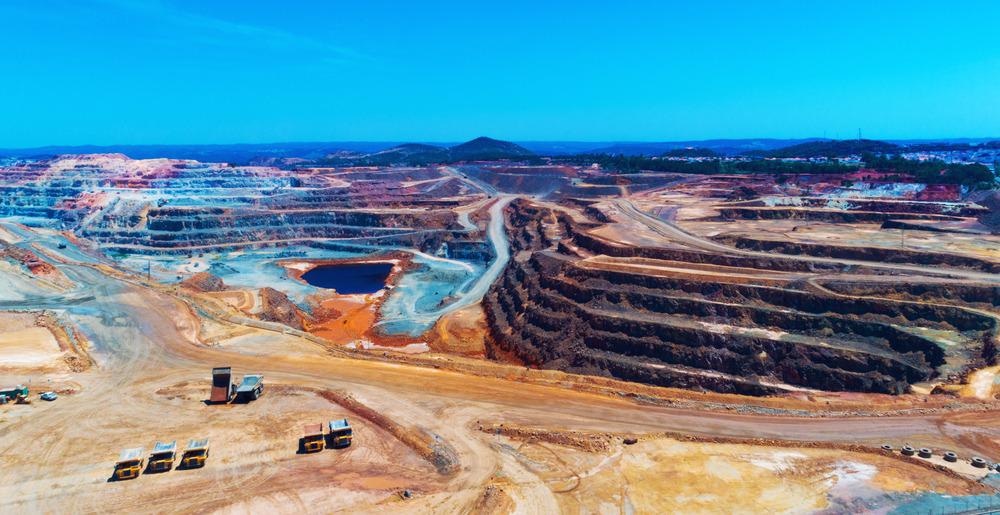Copper is a lesser appreciated metal in society yet is so important in our everyday lives and is used within several areas of society. Copper is a great conductor of electricity, which means that it is essential to our electronic devices, from traditional phone lines to the newest smartphones. Yet, the process of copper extraction has been lengthy and complex. Can innovations simplify it as demand rises amid the green revolution?

Image Credit: Denis Zhitnik/Shutterstock.com
The chemical element copper has the symbol Cu (derived from the Latin cuprum). Compared with other metals, it is relatively soft and malleable. Importantly, for the modern age we live in today it is very high in its thermal and electric conductive properties. The original phone and broadband network were made of copper. Our traditional phone lines had copper in them to transmit audio. Already, these phones lines are being replaced with digital networks. In the UK, this is known as an IP network, where many traditional phone lines are now becoming obsolete.
This does not reduce our reliance on copper. The metal is used in all kinds of electronic wiring. Large amounts of this resource are needed more than any other metal for our mobile phones. According to an article published by Professor Sandra Wilson, in The Conversation, just over 40 mobile phones contain about 1 g of gold, which is valued at US $60. This is nearly equivalent to the gold content of some wedding rings.
According to CNBC’s account of the copper shortage in the context of the green economy: “Copper prices have surged in 2021. The base metal remains in high demand, much thanks to its need in green energy projects and electric cars... And power grids getting electricity from wind, solar and hydro sources also need copper—much more than the industry is currently producing.”
Meanwhile, according to Copper Alliance and the United States Geological Survey (USGS), the world’s copper reserves are estimated at 870 million tons and copper demand is 28 million tons each year.
Typical Copper Extraction Process
The process of extracting copper for its ore is quite complex and varied. It largely depends on the type of ore in question, particularly whether it is a sulfide or oxide type.
Copper mining has typically been performed through open-pit mining, where stepped benches are dug deeper and deeper into the ground over time. To remove the ore, boring machinery drills holes into the rock, and even explosives are used to break the rock apart.
Globally, approximately 80% of copper production is taken from various sulfide sources. Despite what the type of ore is, or where it is derived from, mined copper ore must first be treated so that unwanted materials within the ore are removed. This involves concentration, crushing, and powdering ore in a ball or rod mill.
Sulfide and Oxide Copper Ores
Nearly all copper ores of the sulfide type such as chalcocite, chalcopyrite, and covellite are treated through the well-known process of smelting. After the ore is crushed to powder, it is treated with froth flotation, whereby the powder reacts with reagents that treat the copper to make it hydrophobic. After being treated further with water and a foaming agent, frothing is enhanced.
After the air is brought up through the water, bubbles form that float the water-repellent copper particles to the surface of the water. This separates out the froth which has 30% copper, 27% iron, and 33% sulfur.
The flotation process gets rid of impurities in the ore, where there may also be lead and other vital metals in our society such as gold and silver. Selective flotation can highlight the other components to be removed or reused for another purpose.
There are several other methods, which are also lengthy in their steps and processes. Is there a way copper ore extraction could be simplified? To find out, we need to explore innovations in the field.
Newer Methods
As reported in MIT news in recent years, researchers devised an electrically driven method for separating copper from sulfide minerals without using harmful byproducts such as sulfur dioxide.
For oxide-type copper ores such as in azurite, brochantite, chrysocolla and cuprite, a solution with sulfuric acid is used on leaching pads or leaching tanks to produce an effect when in touch with the ore, in which a weak copper sulfate solution is produced.
The resulting solution is processed through solvent extraction and electro-winning. These researchers from MIT found a way of extracting liquid copper metal and sulfur gas from an electrolyte made up of barium sulfide, lanthanum sulfide, and copper sulfide, yielding over 99.9 pure copper.
The electrically-based method is called molten electrolysis. A similar process was used for aluminum but could not be used for sulfide minerals containing copper. Essentially, the sulfide is decomposed into copper and sulfur. This new method makes the process simpler, compared with the complex steps that have traditionally been taken for copper ore production, as we have outlined in this article.
References and Further Reading
Your mobile phone is powered by precious metals and minerals [Online]. NHM. Available at: https://www.nhm.ac.uk/discover/your-mobile-phone-is-powered-by-precious-metals-and-minerals.html Accessed on 10 February 2022.
Why a looming copper shortage has big consequences for the green economy [Online]. CNBC. Available at: https://www.cnbc.com/video/2021/07/30/why-a-looming-copper-shortage-has-big-consequences-for-the-green-economy.html Accessed on 10 February 2022.
Manufacturing Process of Copper [Online]. ThoughtCo. Available at: https://news.mit.edu/2017/new-way-of-extracting-copper-0628 Accessed on 10 February 2022.
Copper Smelting and Refining Process [Online]. Pan Pacific Copper. Available at: https://www.ppcu.co.jp/eng/about_ppc/processes.html Accessed on 10 February 2022.
Disclaimer: The views expressed here are those of the author expressed in their private capacity and do not necessarily represent the views of AZoM.com Limited T/A AZoNetwork the owner and operator of this website. This disclaimer forms part of the Terms and conditions of use of this website.